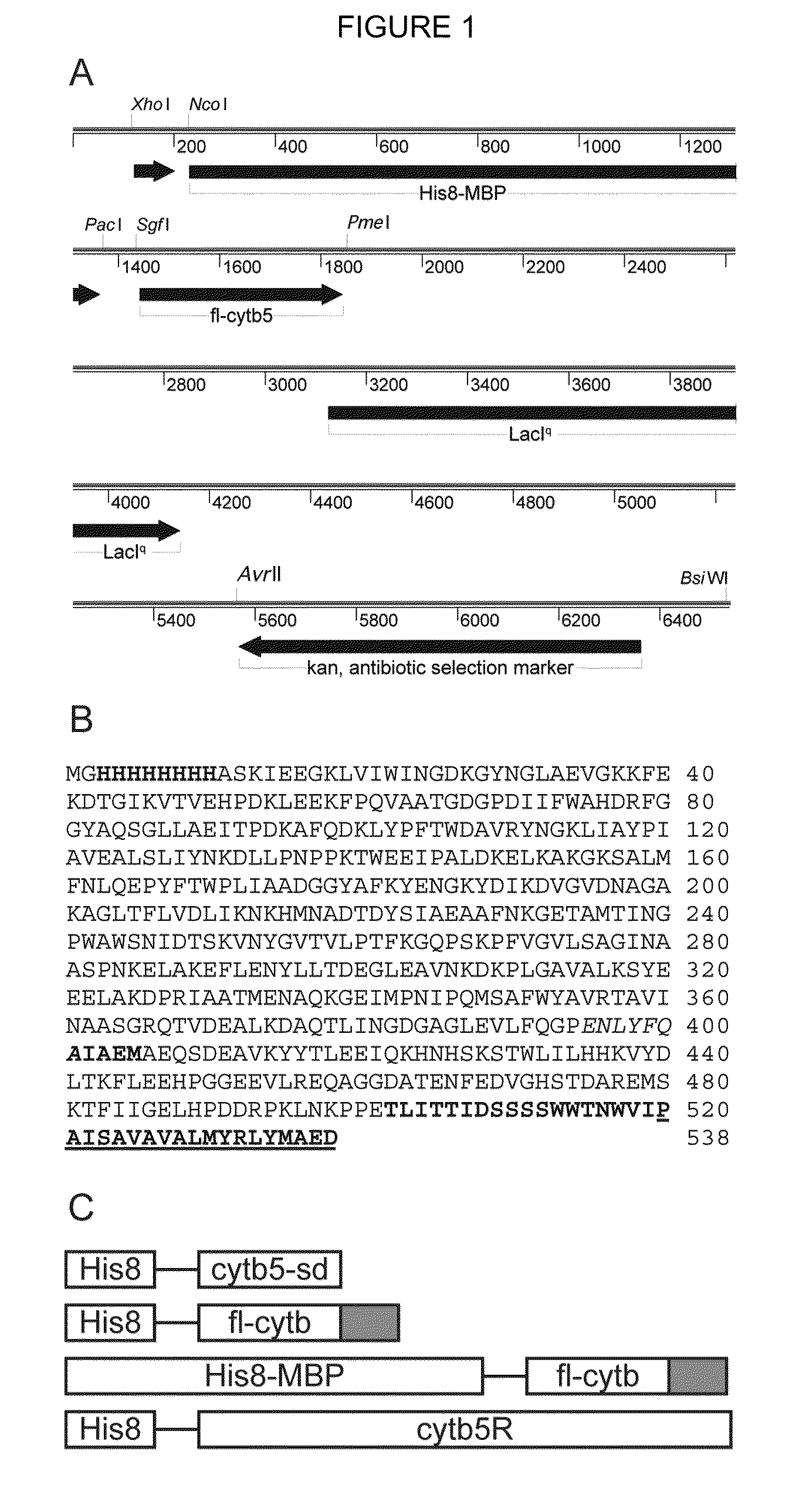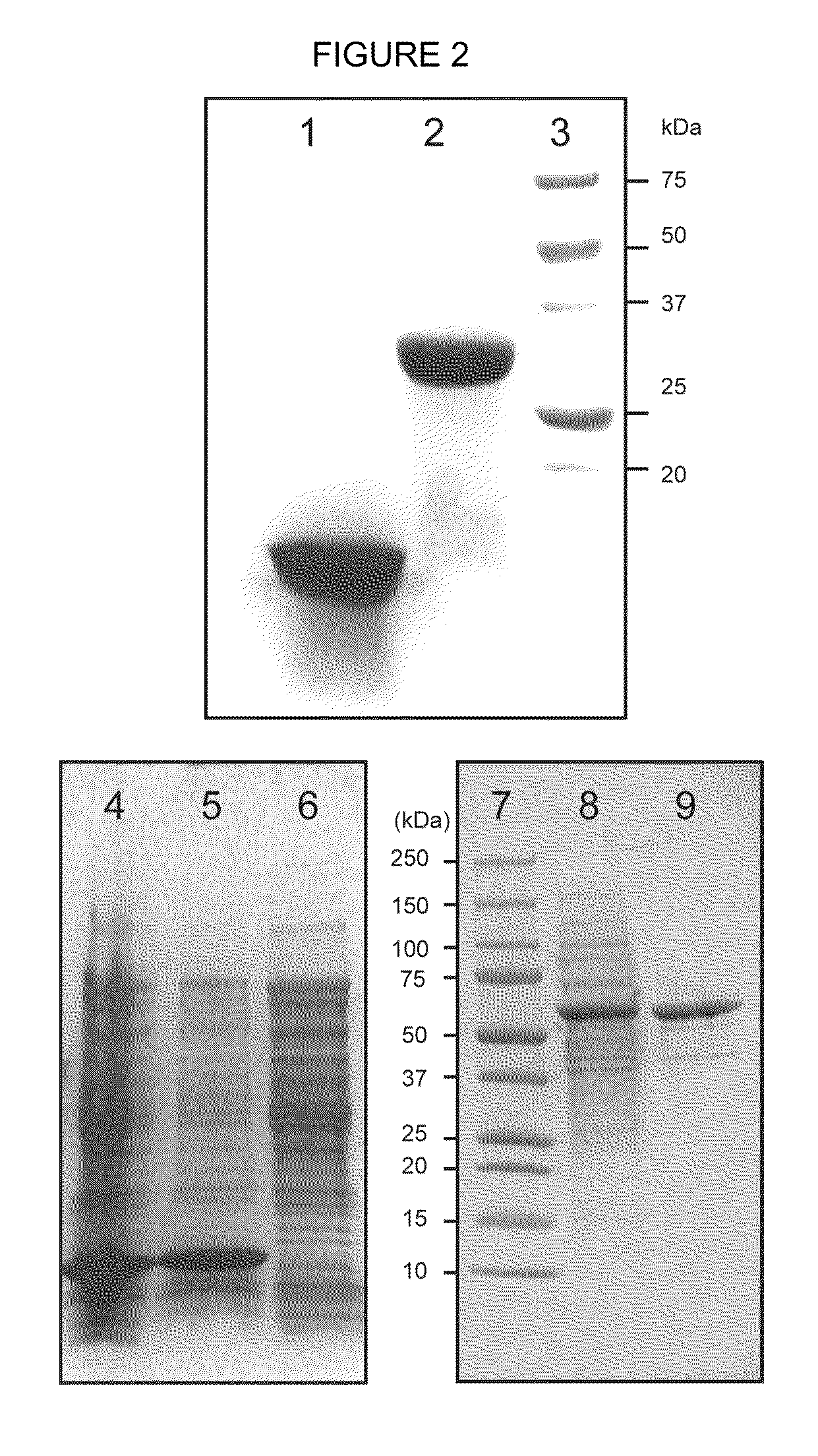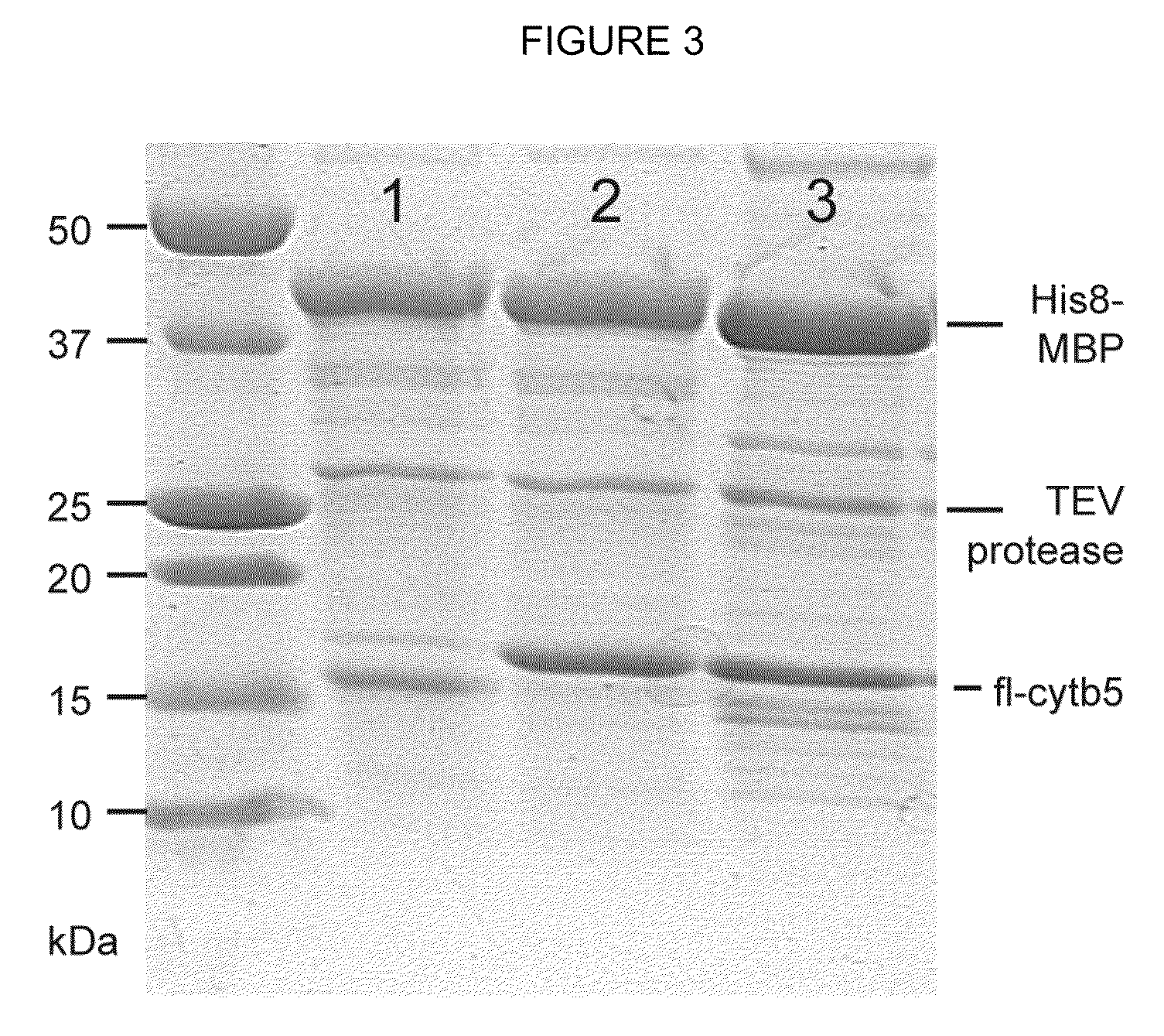Expression systems for functional membrane polypeptides
a functional membrane polypeptide and expression system technology, applied in the biochemical arts, can solve the problems of difficult to obtain heme, laborious and time-consuming preparation methods, and the inability to recombinant protein in a functional form remains a major challenge, and achieves the effect of efficient catabolism of maltodextrin
- Summary
- Abstract
- Description
- Claims
- Application Information
AI Technical Summary
Benefits of technology
Problems solved by technology
Method used
Image
Examples
example 1
[0078]Materials
[0079]Unless otherwise stated, bacterial growth reagents, antibiotics, routine laboratory chemicals, and disposable labware were from Sigma-Aldrich (St. Louis, Mo.), Fisher (Pittsburgh, Pa.), or other major distributors. Chloroporphyrin IX was obtained from Sigma-Aldrich. DNA sequencing was performed in the University of Wisconsin Biotechnology Center.
[0080]Expression Vectors
[0081]The expression vectors pVP55A and pVP56K were created from pQE80 (Qiagen) by removal of a non-functional chloramphenicol acetyltransferase coding region and specifically in pVP56K by replacement of the beta-lactamase coding region with an aminoglycoside 3′-phosphotransferase coding region conferring kanamycin resistance. The vectors use the viral T5 promoter under control of an engineered double lac operator for recombinant gene expression. The plasmid backbones also provide the strong lacIq promoter for elevated expression of the lac repressor, LacI. Elevated expression of LacI provides str...
PUM
| Property | Measurement | Unit |
|---|---|---|
| time | aaaaa | aaaaa |
| temperature | aaaaa | aaaaa |
| temperature | aaaaa | aaaaa |
Abstract
Description
Claims
Application Information
 Login to View More
Login to View More - R&D
- Intellectual Property
- Life Sciences
- Materials
- Tech Scout
- Unparalleled Data Quality
- Higher Quality Content
- 60% Fewer Hallucinations
Browse by: Latest US Patents, China's latest patents, Technical Efficacy Thesaurus, Application Domain, Technology Topic, Popular Technical Reports.
© 2025 PatSnap. All rights reserved.Legal|Privacy policy|Modern Slavery Act Transparency Statement|Sitemap|About US| Contact US: help@patsnap.com



